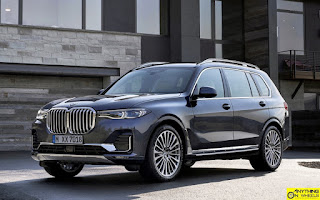When Hyundai unveiled the made-for-India Santro at the 1998 Auto Expo in New Delhi, not many expected the car to succeed in India. That’s not surprising, given Hyundai was pretty much an unknown entity and the car itself, with it’s odd-ball styling and weird tall-boy proportions, looked funny. Let’s also not forget that the Tata Indica and Daewoo Matiz made their debuts at the same event. But what happened when the car went on sale in September that year is history. The Santro took the market by storm, usurped hitherto-unchallenged market leader Maruti-Suzuki and laid the foundation stone for the success enjoyed by Hyundai in India till date.
That explains why Hyundai went all out in building up hype around the all new Santro that’s making a comeback in India after a six year hiatus. Though the car was officially launched and prices were revealed today, India’s second largest car-maker had revealed the car and opened online bookings earlier this month. The response, as one would expect, has been great. The new Santro had garnered 23,500 bookings at the time of its launch, underlying the reach and popularity of the nameplate.
Slotting in below the Grand i10 in Hyundai's lineup, the Santro will eventually take the place of Eon as the brand's entry level hatchback in India. Available in five variants - D-Lite, Era, Magna, Sportz and Asta - the Santro is priced between ₹3.89 Lakhs and ₹5.45 Lakhs ex-showroom pan India. The Magna and Sportz variants are also available with a factory-fitted CNG option (₹5.18 - ₹5.46 Lakhs) and an Automated Manual Transmission (₹5.23 - ₹5.64 Lakhs) developed in-house.
These prices put the Santro firmly between cars like the Maruti-Suzuki Celerio and Tata Tiago at the lower end and the Maruti-Suzuki Wagon-R, it's big rival for almost two decades now, at the higher end. Hyundai's new hatch is expected to pull customers from all of these cars as well as legacy customers who are still holding on to their old Santros for the space and practicality it offers in a compact footprint.
Santro has always split opinions when it comes to design and styling and the new model stays true to that tradition. When Hyundai released images of the new Santro two weeks ago, the first reactions were that the car is overstyled. That's particularly true when the Santro shows off its profile where the unusual kink in the window line and the busy character lines vie for attention. Out at the front, the Santro gets Hyundai's new Cascading Grille that now extends the full width of the car even encompassing the high-set fog lamps. A pair of swept-back headlights - not too dissimilar to the old i10 - complete the front end. The rear gets a sculpted tailgate and a two tone bumper with built-in reflectors.
One area where the Santro knocks the competition out of the park is with it's interiors. The biege and black cabin is well designed, well equipped and appears nicely put together. Smart touches include propeller-shaped side air-conditioning vents, a trendy instrument cluster with standard tachometer and champagne gold inserts that syncs perfectly with the beige cabin plastics. An array of first-in-class features - rear air-conditioning vents, a 7-inch touchscreen infotainment system equipped with Android Auto, Apple CarPlay, Mirror Link and Voice Recognition and rear parking camera with display in the touch screen - make their debut in the Santro.
While Antilock Braking System with Electronic Brakeforce Distribution and driver airbag are standard across the range, only the top-end Asta gets a passenger airbag. This is disappointing given the increasing levels of awareness and focus on safety. What's more annoying is Hyundai's stubbornness in not giving the buyers an option of a top-end automatic model. You can't get a Santro with a passenger airbag and an AMT!
Powering the Santro is Hyundai's tried and tested 1.1-liter engine that produces 68 horsepower at 5,500 rpm and 99 Nm of torque at 4,500 rpm. In a segment where rivals use 3-cylinder engines, Santro's smooth and refined 4-cylinder mill will be an advantage. The engine comes mated to a 5-speed manual transmission or an Automated Manual Transmission dubbed 'Smart Auto'. Both the variants come with an ARAI-certified fuel efficiency of 20.3 km/l. If you opt for one of the two CNG variants, the power and torque figures drop to 58 hp and 84 Nm respectively.
The Santro is built on Hyundai's newer, bigger and stronger K1 platform that uses Advanced High Strength Steel at critical places on the body.
With over 1.86 million units sold in India and abroad during its first stint, the Santro has a huge customer base to build upon. And with the new Santro already off to a great start, things are looking brighter than ever for that number to swell considerably in the car's second stint in India. Let's watch this space!











